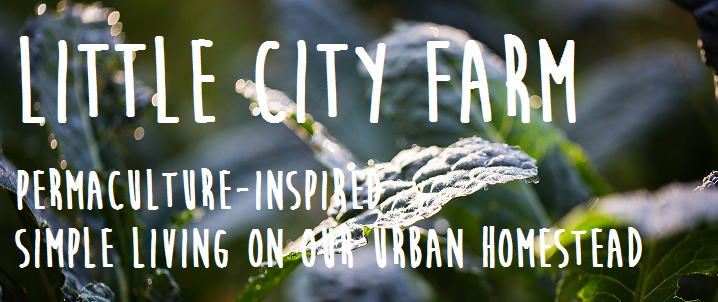Here's a simple and quick summary for any of you urban homesteaders who want to try this yourself. Of course, there are lots of great resources at the library and online that will give much more detail about the process (and we are still learning!), but we have heard and read stories of good success with these types of trees. We are hopeful that all our efforts will be worthwhile. More updates to come.
1. Once the daytime temps are around 10+ C but nights are still below 0 (around -10C) you are ready to start. Choose healthy mature trees, best if they have a good south facing exposure to the sun during the day.
2. Drill holes at a slight upward angle, using a 7/16 inch drill bit. Make sure to get the woodchips out of the hole before tapping in your spile. You can drill 2-3 hole per tree.
3. Tap in spile using a hammer. Hang your bucket or pail securely below, using a hook or nail, so that spout drips directly into container. Add a tight lid to help keep out debris and squirrels!
4. Check your buckets every day, or even twice a day depending on how much the sap is flowing. Empty into larger foodgrade pails or jugs and store in the cold until you are ready to boil.
5. To boil sap, build an outdoor fire or use a camping stove. This will take at least 8 hours, which can be done in one day or over several (as long as sap is kept cold inbetween boilings).
6. Using a stainless steel pan or pot bring sap to a temperature that is 7.5 degrees over the point of water boiling. Keep it at this temperature, stirring and skimming off foam.
7. Once sap has boiled down significantly (the ratio is about 8 litres down to 1-2 cups) strain it through a filter (cheesecloth or other filter) and hot pack it into glass jars.









No comments:
Post a Comment